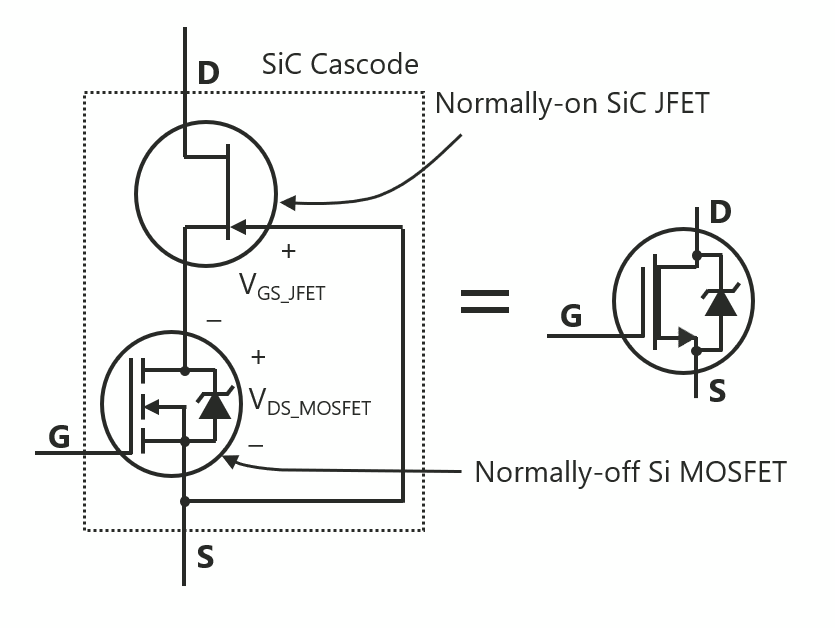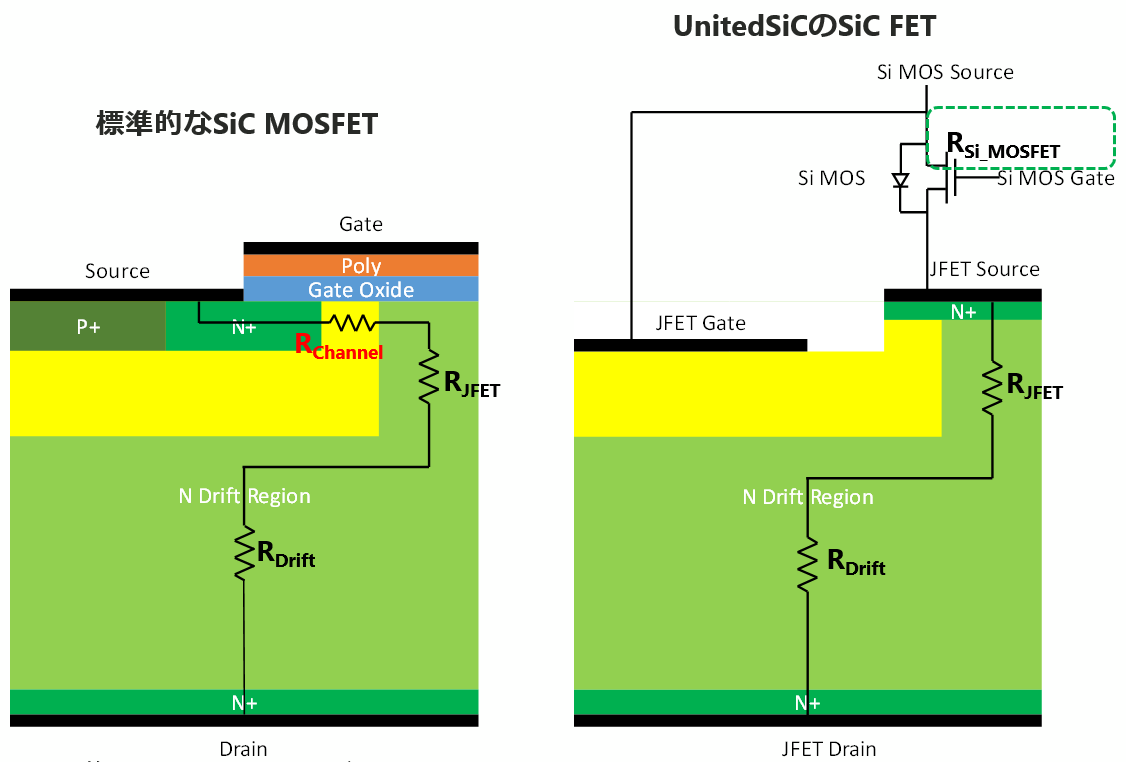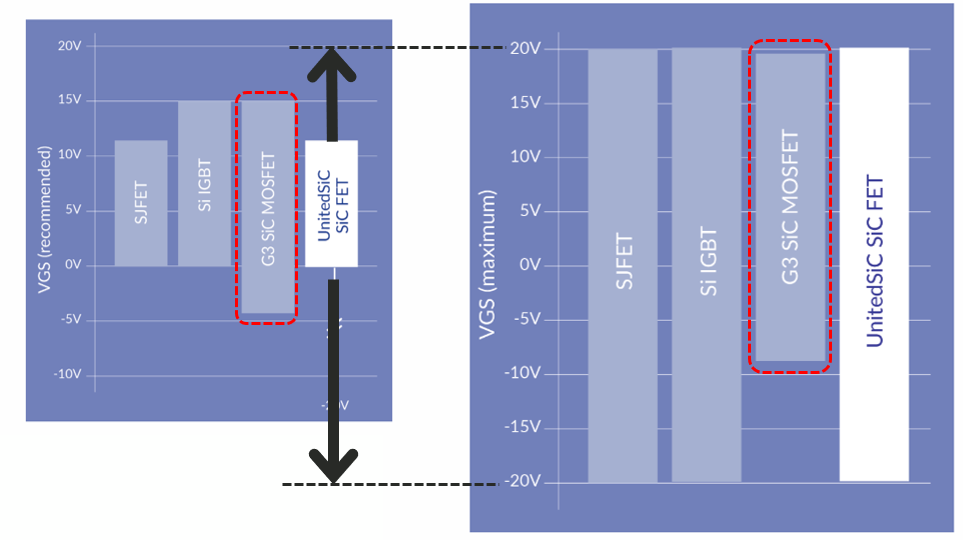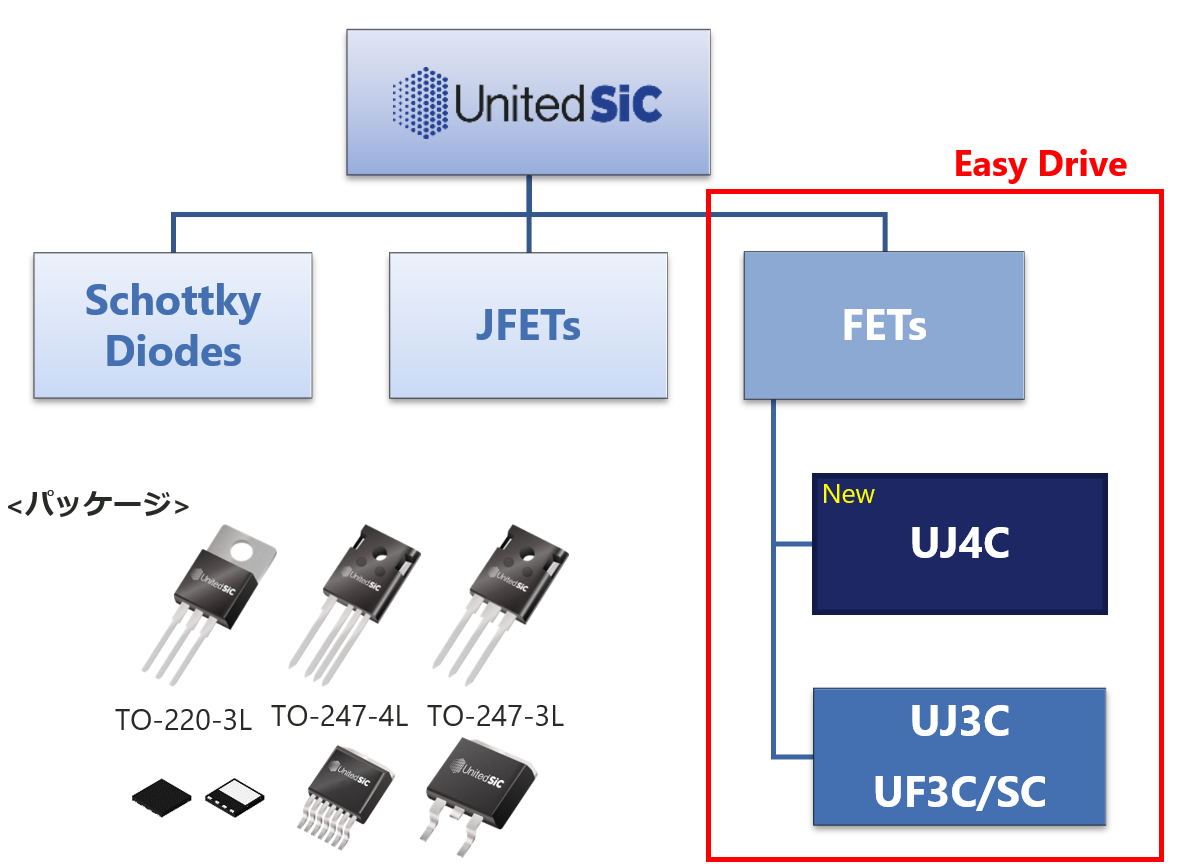Very distinctive cascode-connected "SiC-FET"
This article describes Qorvo's "SiC-FET", a very distinctive cascode connection.
Qorvo cascoded devices
A simplified schematic of the internals of the actual device is shown below. As you can see, the SiC-JFET and Si-MOSFET are cascode-connected. This type of connection makes it appear to the user that you are connecting Si-MOSFETs, greatly improving usability. In addition, SiC-JFET is said to be normally on, and when the gate is opened, it turns on and enters a dangerous mode. Only Qorvo is currently developing such SiC.

Why do Qorvo devices have low on-resistance per unit area?
The figure below shows a simple cross-sectional structure of a general SiC MOSFET and Qorvo's cascode-connected SiC FET. We will analyze the on-resistance when a voltage is applied, but the parameters RDRIFT and RJFET are almost the same for both SiC MOSFET and SiC JFET. However, SiC MOSFETs have a channel resistance that is extremely high. Compared to the value of Qorvo's Si MOSFET, the value of a general SiC MOSFET is about 10 times worse. For example, when 650 V is applied, the channel resistance accounts for more than 50% of the total on-resistance.
Looking at Qorvo FETs, JFETs do not have channel resistance like SiC MOSFETs, but Si MOSFETs have on-resistance. This Si MOSFET is uniquely designed by Qorvo and has a very low on-resistance. Therefore, the value is 10% or less of the on-resistance of the entire FET, resulting in a low total on-resistance.
This is the reason why the on-resistance of Qorvo's SiC FETs is extremely low. Now that you understand that the on-resistance of the device is low, let's talk about the ease of driving the SiC FET series.

Ease of driving Qorvo devices
Next, I will explain the ease of driving SiC-FETs. A typical SiC MOSFET requires a negative voltage such as -5V to turn it off completely. A high voltage such as 15V is required to turn it on completely. Also, in many cases, VGS can only tolerate up to -7V. This is because the SiC MOSFET has a channel structure, and there is not much margin for the drive voltage with respect to the VGS withstand voltage. There is a graph of VGS maximum rating and VGS recommended operating voltage above, but SiC MOSFETs do not have much margin, and if the maximum rating is exceeded, the life of the device will be affected. Looking at UnitedSiC's FET, VGS is 0 to 12V, and the withstand voltage is ±20V, which is about the same as a general Si MOSFET. As you can see from this value, it is extremely robust compared to SiC MOSFETs, expanding the options for gate drive circuits.
In this way, it means that existing drivers such as Si-MOSFET/SiC-MOSFET/IGBT can be used as they are, and customers currently designing applications with Si-MOSFET need to prepare a new negative power supply. indicates that there is no

About the Qorvo Portfolio
Qorvo has a product portfolio as shown below. There are SiC diodes, SiC JFETs, and SiC FETs.

Related information
For Qorvo's characteristic SiC-FET series, please refer to the product lineup at the link below or contact us individually. Also, the latest 4th generation devices are explained in the link below, so if you want to see more detailed information, please refer to it.
Inquiry
If you have any questions regarding this article, please contact us below.
Qorvo manufacturer information top page
If you want to return to Qorvo manufacturer information top page, please click below.
